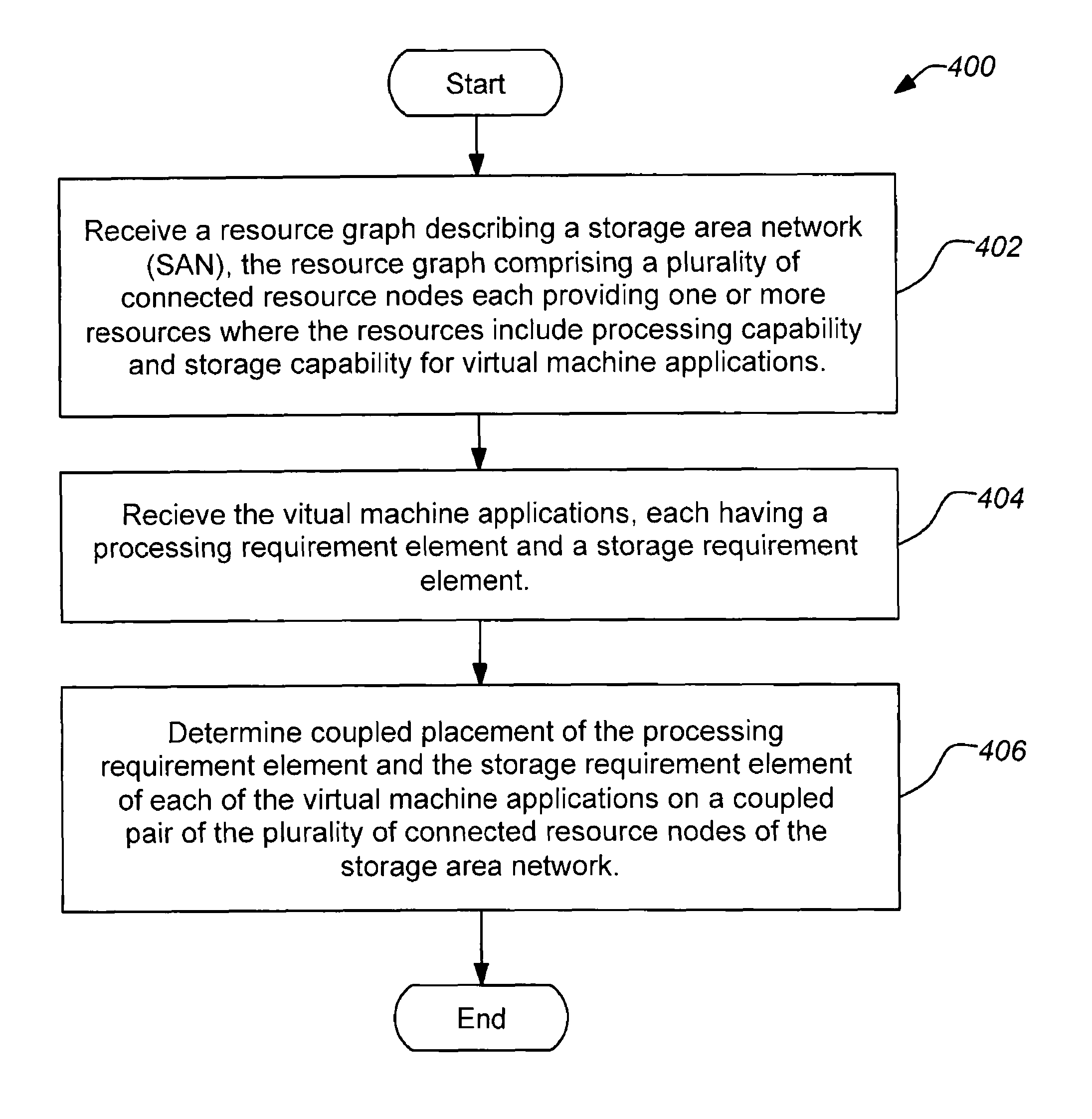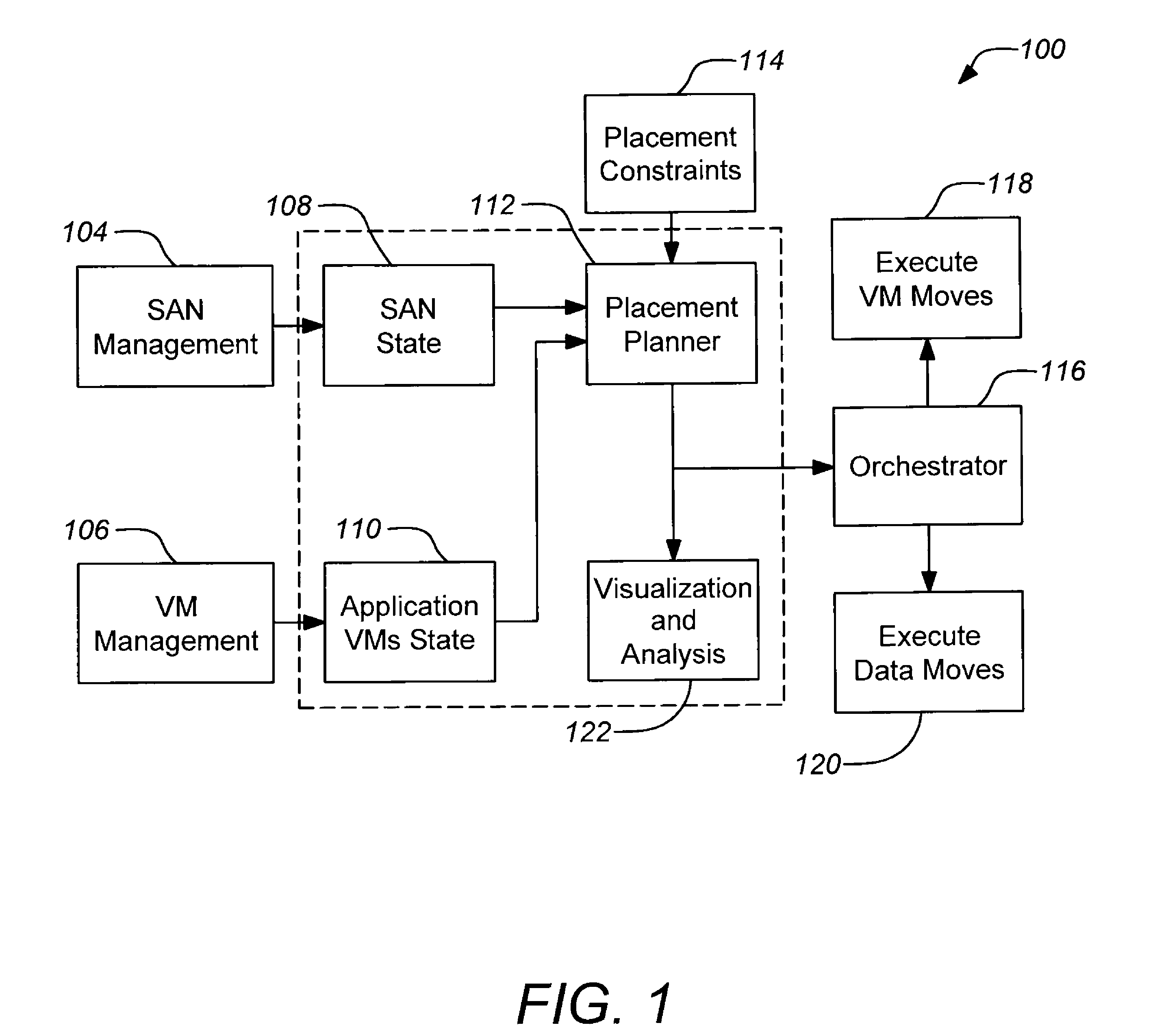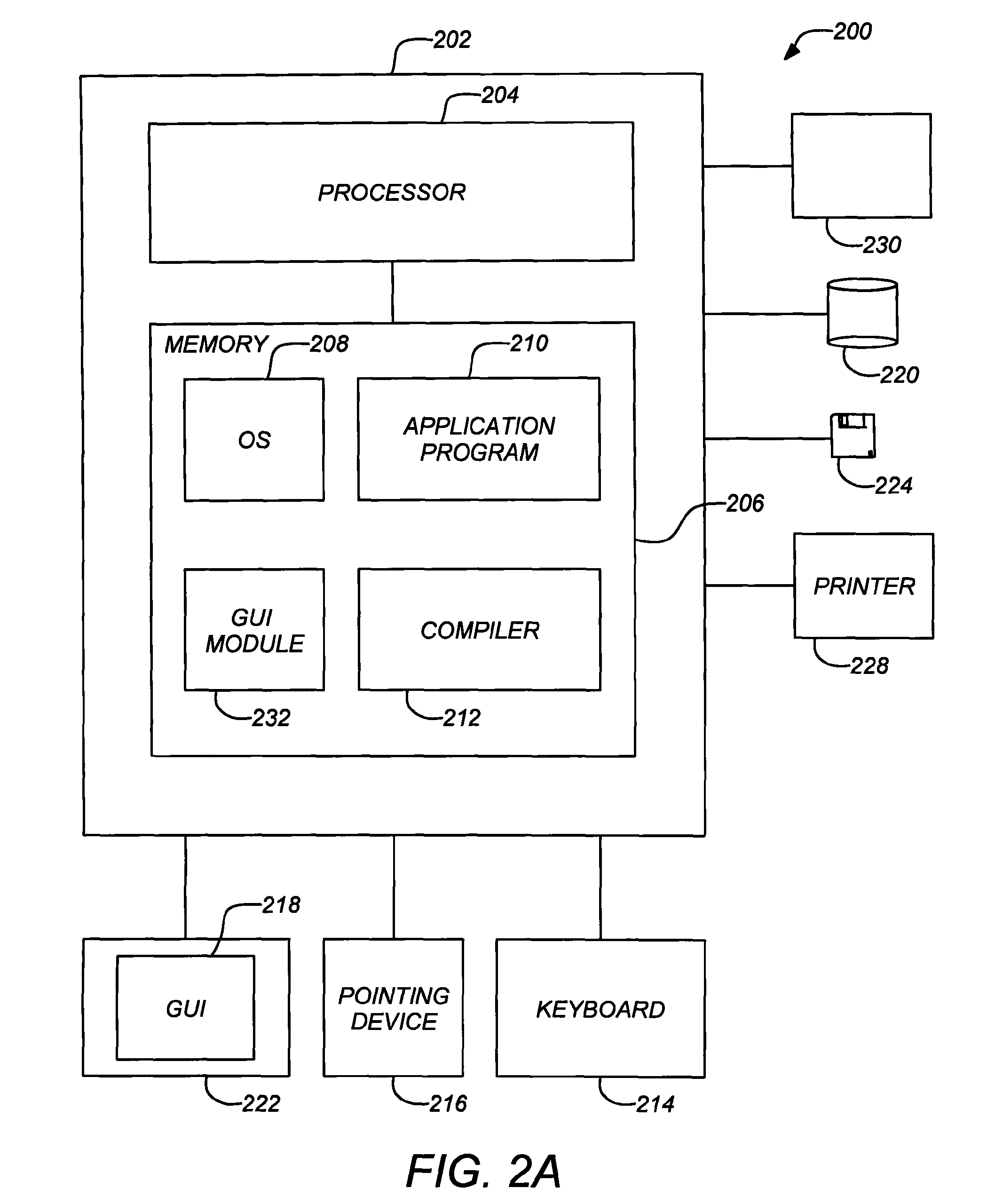Integrated placement planning for heterogenous storage area network data centers
a technology for heterogeneous storage area networks and data centers, applied in the direction of multi-programming arrangements, instruments, program control, etc., can solve the problems of determining the cost of allocation, managing such environments remains a challenge, and the nodes in the storage area network (san) are becoming increasingly heterogeneous, and achieve the effect of reducing the cost factor
- Summary
- Abstract
- Description
- Claims
- Application Information
AI Technical Summary
Benefits of technology
Problems solved by technology
Method used
Image
Examples
Embodiment Construction
[0036]1. Overview
[0037]An integrated framework is presented that uses a coupled placement algorithm to support CPU and storage placement planning of a collection of applications in a heterogeneous SAN data center environment. Administrators can specify a cost function that determines the affinities between CPU and storage nodes for each application in their data center workload. Based on this cost function, the coupled placement algorithm will output a placement plan which identifies which connected resource nodes where each virtual machine application's CPU and storage requirement elements should be placed as a coupled item.
[0038]FIG. 1 illustrates an exemplary system 100 for placing application items on coupled processing and storage resource nodes. The system 100 can operate as software within the computer hardware environment described in the next section. The coupled placement module receives input from both the SAN management 104 and VM management 106. The SAN management 104 p...
PUM
 Login to View More
Login to View More Abstract
Description
Claims
Application Information
 Login to View More
Login to View More - R&D
- Intellectual Property
- Life Sciences
- Materials
- Tech Scout
- Unparalleled Data Quality
- Higher Quality Content
- 60% Fewer Hallucinations
Browse by: Latest US Patents, China's latest patents, Technical Efficacy Thesaurus, Application Domain, Technology Topic, Popular Technical Reports.
© 2025 PatSnap. All rights reserved.Legal|Privacy policy|Modern Slavery Act Transparency Statement|Sitemap|About US| Contact US: help@patsnap.com



